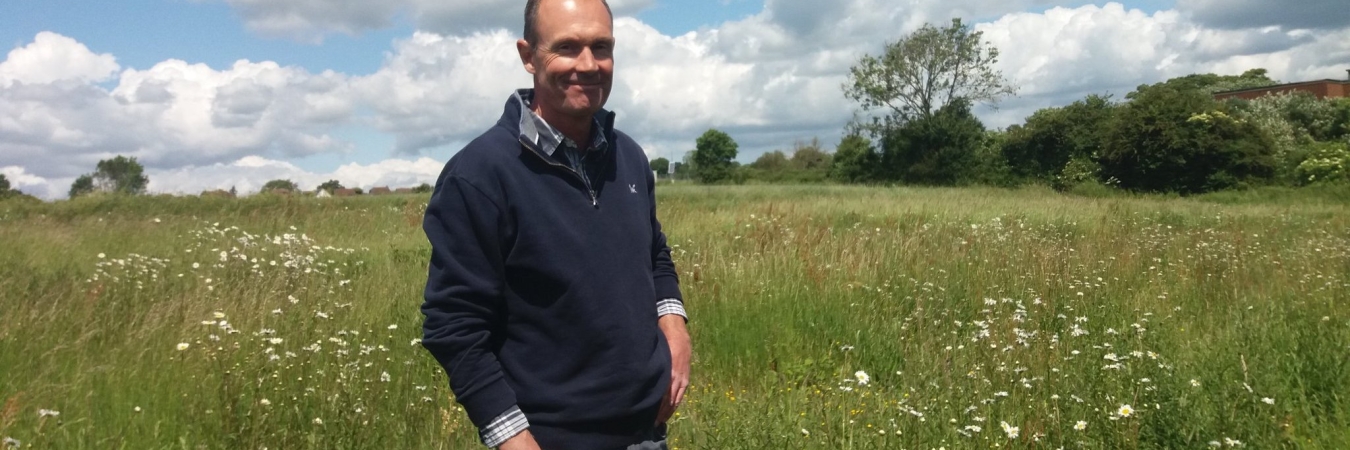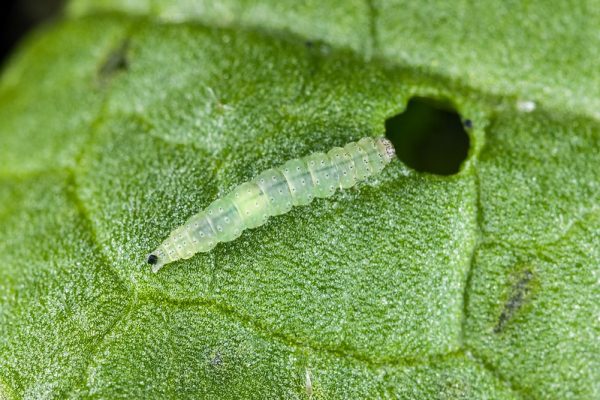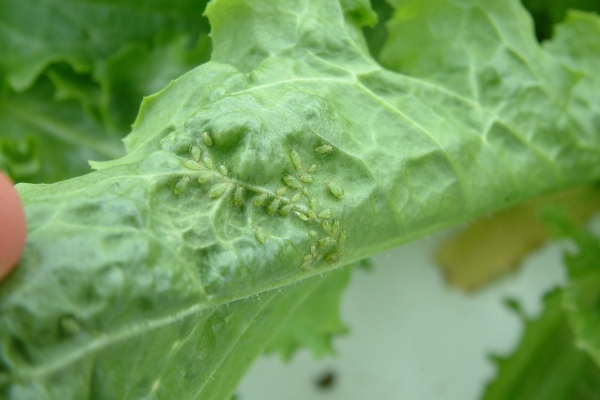Andy Barr
East Lenham Farm, Kent
East Lenham Farm is a mixed farm in the heart of Kent, covering about 1,200 acres, the majority of which is in arable rotation, the rest is grassland (with Romney sheep).
We produce mainly milling wheat, malting barley, oilseed rape (OSR), beans, grass seed, and lamb. As we farm a wide variety of soil types, yields do vary substantially – we have land that rarely yields under 10 tonnes of wheat (famous last words!), but also land that has never yielded over 10 tonnes. Our sandier land, although easy to plant in the spring, is highly vulnerable to the increasing years of spring drought we are experiencing. All grain is stored and sold through our local co-operative, Weald Granary.
After a degree in Natural Sciences and two years in banking, I finally realised the error of my ways and returned to the family farm in the mid-nineties. From then on, initially purely to cut costs, we have moved down a progressively lower tillage path and have now been direct drilling for 9 years. Other integral parts of the system involve a more diverse rotation, many countryside stewardship features (such as field margins and field corners planted with rough grasses, flower and nectar mixes and bird food to encourage wildlife diversity), cover and companion crops, re-integration of sheep, and use of foliar nutrition and biological products.
The general aim is to maintain or increase yields while cutting costs to a minimum and increasing the health of all our farm ecosystems. True sustainability in its widest sense would be great, but in truth we are not close.
We have set up a solar farm and rent out buildings for warehouse, office and residential use.
I am a member of LEAF (Linking the Environment and Farming) and currently a director of Weald Granary, Southern Farmers Limited and Kent County Agricultural Society.
Listen to Andy introduce the sustainable, agro-ecological practices that he currently carries out on the farm here:
Some key points
- Andy moved to no till and growing cover crops on the farm in 2010, and has been combining companion crops with wheat and OSR.
- After stopping using foliar insecticides 12 years ago, he has been trialling a decreased fungicide regime i.e. using resistant crop varieties, varietal mixes in wheat and OSR, and experimenting with crop competition.
- He has been reintegrating livestock (sheep), bringing grass back into the rotation, rotational grazing cover crops, and cultivating herbal leys; increasing the diversity in the grass.
- He believes that if you want to reduce your chemical input, you need to have a systems approach; combining different feasible, practical techniques.
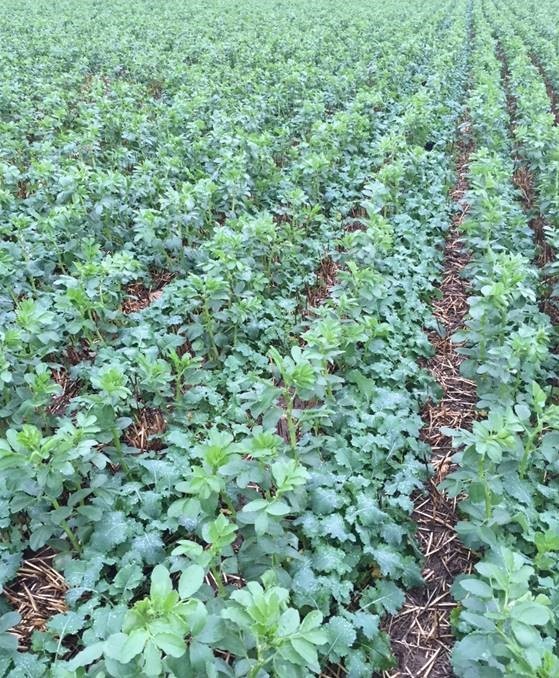
Sustainability in practice
Using conservation agriculture practices to control cabbage stem flea beetle (CSFB)
Listen to Andy talk about alternatives to foliar insecticides that he deploys – particularly with relation to helping control CSFB (includes using companion crops, trap crops, field margins, min and no till….) here:
Some key points
- Having stopped using foliar insecticides, Andy has been looking particularly at using companion and trap crops in OSR to deter pests. He has found less CSFB larvae in the stems with companion cropping and less larvae on crops with no till compared to where ploughing has been used.
- He has tried planting a pea and bean mix this year before planting the OSR; the theory being that the CSFB locate the OSR through smelling it, so the more different smells going out, the more they will be confused.
- He has also been using some trap crops around the outside of fields. NIAB have been doing some work on companion cropping and CSFB and have found white mustard to be effective. Andy believes that the CSFB love the white mustard so they attack that as well as the OSR, whereas peas and beans put them off, so they work in different ways.
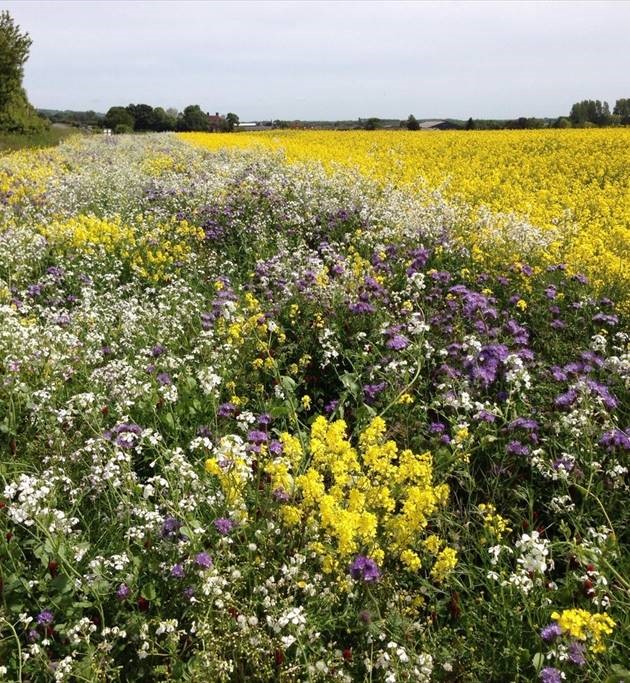
Motivations
Listen to what Andy has to say about his longer-term motivations and tips for farmers here:
Some key points
- The realisation that they were using more and more pesticides, herbicides and fungicides on the farm and essentially getting less effect from them has driven Andy’s long-term goal of sustainability and reduced reliance on non-renewable resources (along with a deep concern about the decline in insects and biodiversity).
- He is aiming to get to a point where nutrients don’t get lost and there is an inherent fertility in the soils.
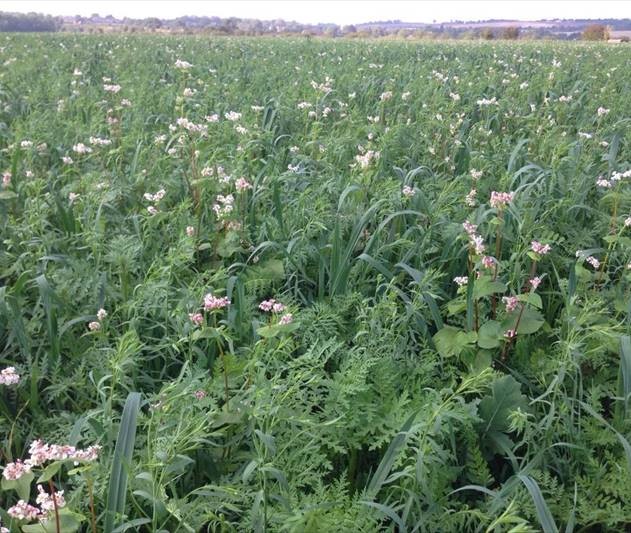
Farmer tips
- With companion cropping, cost of seed can be an issue. Beans and peas are good as you can save your own seed.
- When planting seeds of different sizes, planting all in one go is a challenge. It’s important to consider how to do this – a drill where you can plant at the same time using varying depths is ideal.
- Don’t expect no CSFB from trying different techniques, but it might make the difference between a decent and a poor crop.
- If you end up with no OSR crop due to CSFB, you’ll at least have a cover crop!
